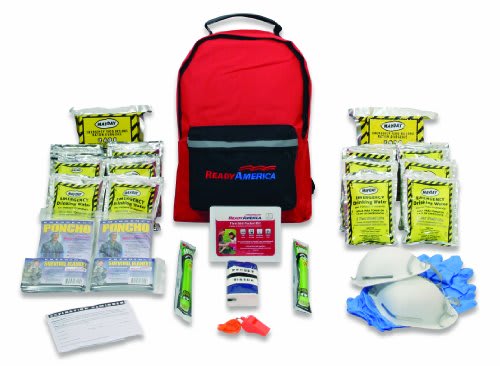Everyone’s so tethered to the Internet these days that being without access to WiFi for an hour can cause panic. Yet being inconvenienced briefly is far different from weathering a true emergency like a hurricane or a severe snowstorm.
From losing power for days to sheltering in place for an extended time, emergencies can leave you scared and overwhelmed. However, you can minimize those emotions by making sure you’re prepared for (nearly) any unexpected situation.
Having a home emergency kit can be a game-changer. Instead of wondering how you’ll keep your family secure, you’ll enjoy the peace of mind that comes from planning ahead.
The following categories are starting points to creating an emergency kit. As you start building your kit, you can add other items. After all, each household is unique, and you want your kit to reflect your specific needs.
1. Basic utilities
When you’re without access to reliable power, you can quickly find yourself scrambling for lighting and heating sources. Rather than foraging for candles, matches, and lanterns, it’s a better practice to have at least one flashlight for every member of your family.
Consider investing in a variety of battery-powered and weather-resistant lighting options that provide different levels of illumination and functionality. As the LED flashlight experts at LUXPRO explain, you’ll want multiple types of lighting for a complete emergency kit: lanterns to illuminate entire rooms, headlamps that free up your hands, and handheld flashlights for focused illumination. For general at-home purposes, 200 to 600 lumens should be sufficient, though a flashlight with at least 1,000 lumens capability may be more appropriate for nighttime outdoor heavy-duty excursions.
For a heating source, you may want to keep an emergency rescue space heater on standby. Even if you have a backup generator, you may prefer to use a small heater, notes emergency heating company 4Patriots. Otherwise, you could end up with a drained generator. Bonus points if your heater can also help you make meals.
2. Nutrition and hydration items
Speaking of meals, you’ll want to plan for about a week’s worth of food and water for everyone in your home. Many sellers offer pre-made emergency meals designed to last. Maybe they’re not your favorite entrees, but they’ll sustain you in a crisis. Just be sure you have a manual can opener on hand if some of your food comes in canned form.
You can supplement any emergency meals with high-nutrition energy bars and related products. Then, stash some in your emergency kit. Oh, and make a reminder to replenish your supply when they get close to their expiration dates. You can’t afford to be without edible food when you need it. This goes for pet food as well.
You’ll require water for hydration, cooking, and cleaning, which means more than a couple of bottles. FEMA advises stocking for around one gallon of water per person per day. Again, make sure to include water for pets.
3. Changes of clothing
Since emergencies occur without warning, you never know what you might be wearing when one strikes. For instance, you could be in your pajamas and have to leave your home quickly. In that case, knowing your emergency kit has at least one change of clothes and shoes would make your life easier (and more comfortable).
To accommodate for temperature and weather fluctuations, add a few different types of wardrobe and footwear pieces into your emergency kit. These could include jackets, sweaters, and boots. Replace your clothing each year to ensure that the apparel and footwear still fit.
In addition to clothing, toss in a few blankets and towels. They’ll help you stay clean and warm, as well as provide a convenient way to sop up any leaking water.
4. Communication tools
Even if you have a generator to supply electricity to your cell phone, you can’t always depend on being able to connect to the Internet during emergencies. That’s where a radio can be a lifesaver. Look for a product that runs on batteries. Alternatively, find one with a hand crank like those offered by portable radio provider Grainger.
If you need or want to communicate with your family in a much simpler and off-the-grid way, buy whistles and hand-held walkie-talkies. Both may be appropriate if you live in a rural area or tend livestock. While you’re outside, you can maintain contact with your household.
A final suggestion for staying on top of changing circumstances, such as road closures, is to have paper maps of your area. Paper maps can show you where you are, as well as how to get to safer places.
5. Medical supplies
When you’re injured during a disaster, you might not be able to get to an emergency room or urgent care center. Consequently, you need a well-stocked first aid kit. Although you could pull together a box of first aid gear, you could also purchase an all-inclusive kit. (They’re available online and through physical big box retailers.)
This doesn’t mean that a ready-made first aid kit will have every supply that’s right for your family. For example, you’ll want to include any prescription and over-the-counter medications that you normally use. Be sure to add hand sanitizer and other hygiene products.
Paper items like towels and toilet paper are nice to include with your medical care kit. Any bathroom essentials from toothbrushes to hairbrushes, can make life seem a little more normal during turbulent times.
Obviously, you hope that you’ll never have to use your emergency kit. Nevertheless, you’ll feel much better knowing it’s at your fingertips, just in case.





